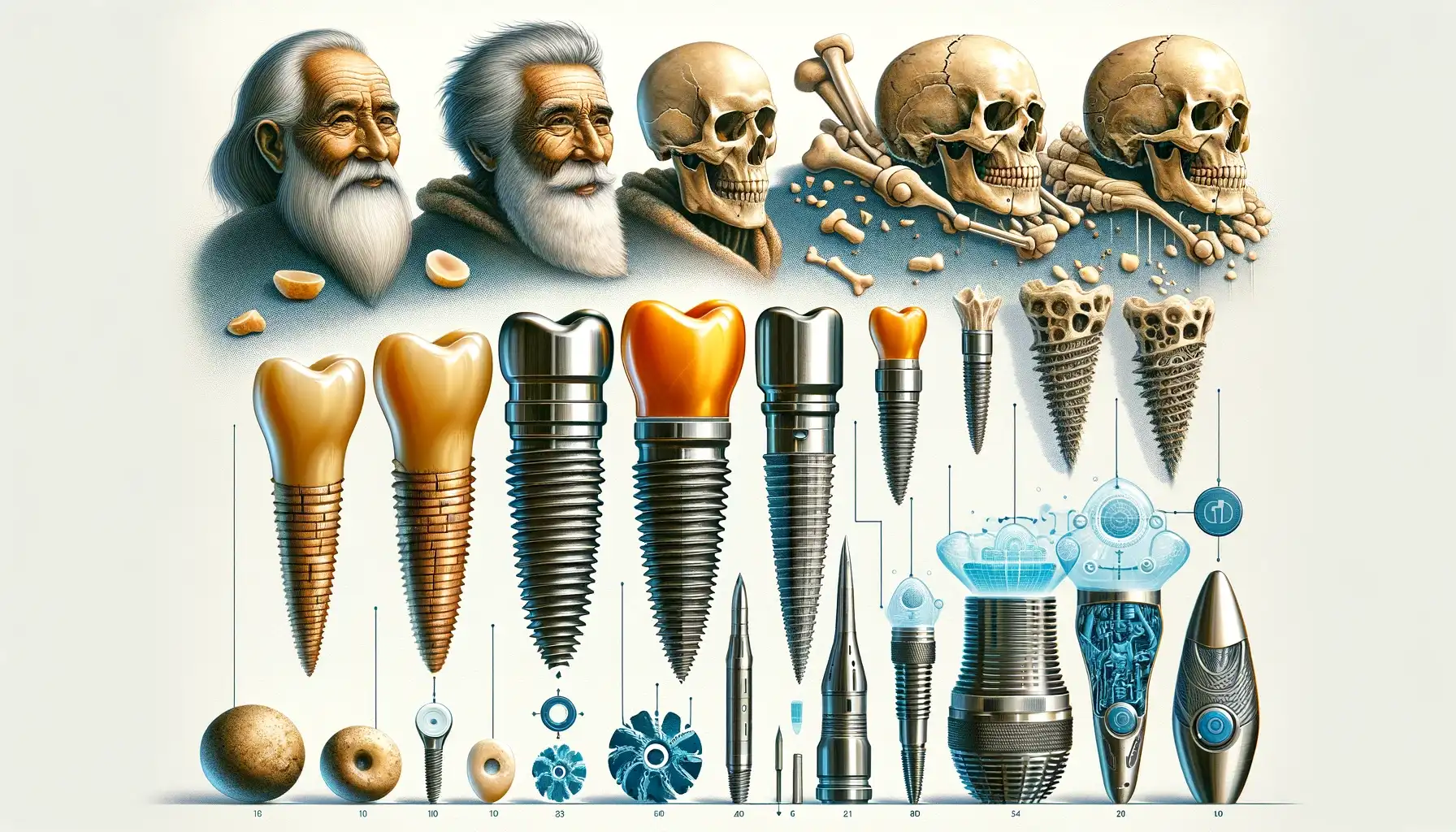The Evolution of Dental Implants

Dental Implants: From Ancient Origins to Modern Innovations
Dental implants are a cornerstone of modern dentistry, providing a permanent solution for missing teeth. This transformative journey from ancient craftsmanship to today’s technological marvels is a testament to human ingenuity and the relentless pursuit of enhancing dental care. Let’s delve into the fascinating evolution of dental implants, highlighting key milestones and technological advancements that have shaped their development.
Table of Contents
Ancient Beginnings
The history of dental implants dates back thousands of years, with early evidence of civilizations using materials like bamboo pegs in ancient China and carved stones in Egypt to replace missing teeth. These rudimentary attempts at dental restoration underscored the early understanding of the importance of tooth replacement, both for functional and aesthetic reasons.
The Discovery of Osseointegration
The modern era of dental implants began with a groundbreaking discovery in the 1950s by Swedish orthopedic surgeon Per-Ingvar Brånemark. He identified the process of osseointegration, where titanium fuses with bone, providing a stable and durable foundation for artificial teeth. This discovery paved the way for the development of the dental implant systems we rely on today.
Technological Advancements and Material Science
The advancement of dental implant technology has been significantly influenced by innovations in material science and manufacturing techniques. The introduction of titanium, known for its strength and biocompatibility, revolutionized implant design and success rates. Further enhancements in implant surface technology, such as coatings that promote bone growth, have improved osseointegration and longevity.
Computer-aided design and manufacturing (CAD/CAM) and 3D printing have further transformed dental implantology, allowing for precise customization and fit, reducing surgery times, and improving overall patient outcomes. These technological advancements have made dental implants more accessible and effective for a broader range of patients.
The Future of Dental Implants
Looking to the future, dental implantology continues to evolve, with research focused on bioactive materials and minimally invasive procedures. Innovations such as the development of implants that release drugs to fight infection or coatings that enhance bone growth are on the horizon. Moreover, the potential for using stem cells to regenerate bone and tissue around implants promises to further revolutionize the field, making dental implants even more successful and long-lasting.
Conclusion
The evolution of dental implants from ancient practices to modern technology illustrates the incredible journey of discovery and innovation in dental care. With each technological advancement, dental implants have become more reliable, efficient, and accessible, transforming the lives of millions by restoring functionality and confidence. As we look forward to future innovations, the potential for improvement in dental implantology remains boundless, promising even more effective solutions for tooth replacement.

